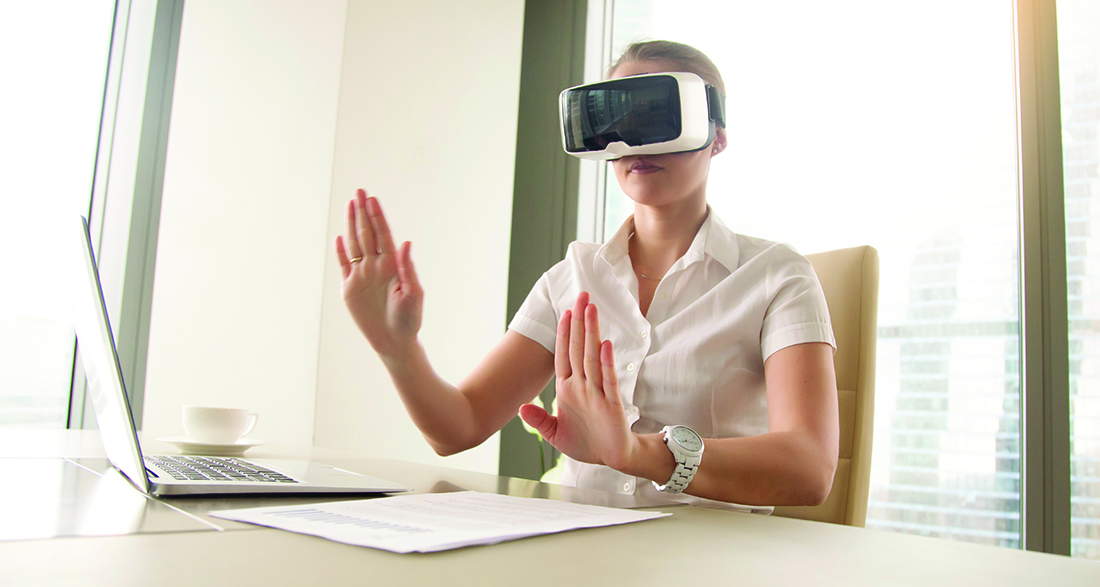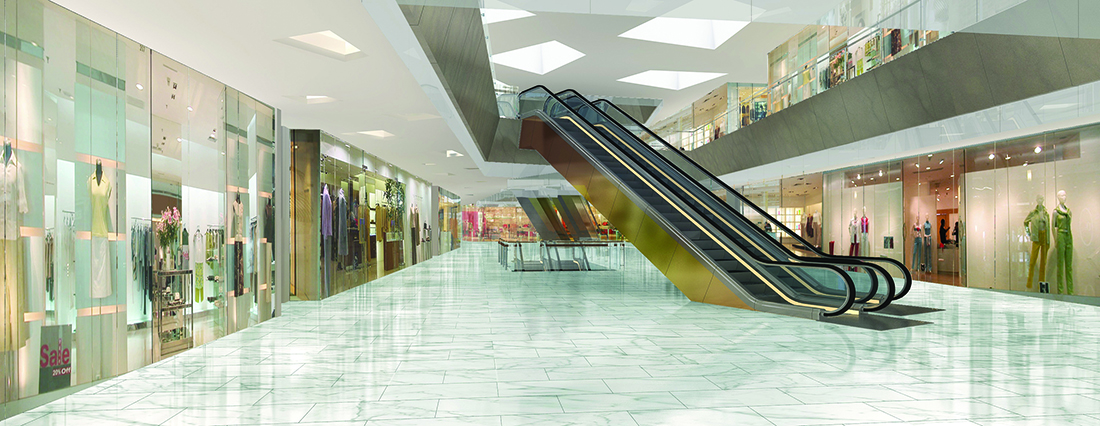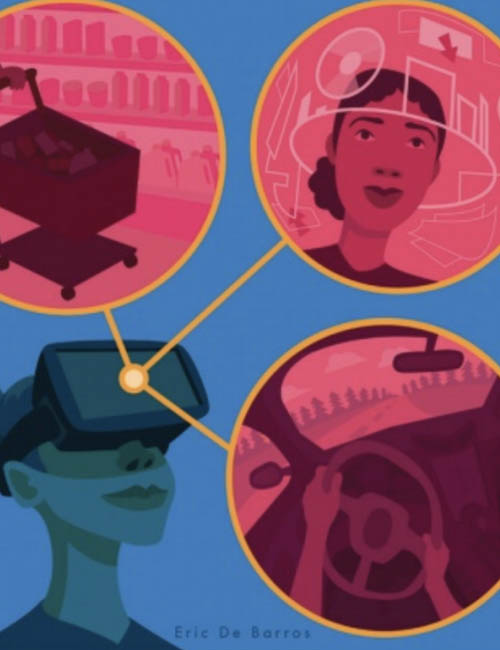Researchers spend much of their time exploring the future in collaboration with consumers and idea creators. From product concepts to environmental experiences to communication ideas, we work to understand how people react to these new creations and how to improve upon them.

With the advent of virtual reality (VR) and augmented reality (AR), we now have the ability to send people into worlds where they can experience these new ideas in settings more realistic than ever before. Consumers can then more authentically interact with these ideas, modify them, and explore how they would use them in their own lives.
These technologies will likely have a powerful influence on many aspects of the research field. Researchers will be able to share experiences with consumers even though one may be at home in one location, while the other is in her office hundreds or thousands of miles away. Consumers will be able to manipulate and build concepts in collaboration with researchers and design teams. Clients will be more engaged as they observe and interact with their consumers in these virtual experiences.
To understand where these technologies are headed, I interviewed researchers on the client and agency side, held some brainstorming sessions, and looked into VR developments in research and other fields. This article is intended to give an overview of VR/AR today, and more importantly, explore what these developments might look like in the near future.
Terminology
As with many evolving fields, there is some debate about terminology. “Virtual Reality” is generally accepted to mean an experience where you wear a video headset (and sometimes headphones) that allows you to immerse yourself in experiences totally different from your current reality. For example, the Microsoft HoloTour allows you to take a tour through Rome with the ability to explore ancient as well as contemporary Rome while learning facts along the way.
“Augmented Reality” combines imaginary experiences with your actual world. Pokémon Go is an example of this, where people see fictional characters on their phone cameras while also seeing images of wherever they are at the same time. Unfortunately, there is lack of agreement on an umbrella term to cover all of these experiences. Microsoft seems to be trying to coin “Mixed Reality” as an umbrella term, but some use “Virtual Reality” to refer to all experiences. For this article, I’ll use the term “Virtual Reality” or “VR” also as an umbrella description for the VR/AR category.
History
While many VR experiences have just been developed, humans have been trying to create and capture alternative experiences for thousands of years. Some believe that cave art made over 30,000 years ago was done in a way to portray motion and symbolize the essence of the animals that provided sustenance to early people. In fact, stereoscopes of the 1800s were so captivating that Oliver Wendell Holmes (an early developer of this dual-photograph technique) said, “The first effect of looking at a good photograph through the stereoscope is a surprise such as no painting ever produced. The mind feels its way into the very depths of the picture.” Stereoscopes evolved into 3D and 4D movies that people enjoy today. These technologies reveal the power of storytelling that taps into human emotions and physiology.
VR/AR Today
A few companies have started conducting research studies in VR. System1 Research (formerly known as Brainjuicer) recently conducted a virtual shopping study for Hershey’s. John Kearon, their founder and CEO, explains the project, “VR captures, with a very high degree of predictability, the likely sales impact of any piece of shopper marketing, including packaging changes. The reasons why something works, or why it decreases sales, is always supposition because we generally shop on auto-pilot and if we’re asked to explain our purchasing, we’re really just making up a plausible story.”
Initially, InContext Solutions started conducting shopping studies over a PC, and they now offer enhanced versions of these shopping experiences using VR. These early innovators show that VR has a compelling place in the growing set of research methodologies. Amy Hebard of InContext says, “Once VR headsets are ubiquitous in households, they could explode as a research tool.”
Currently, about 5% of North American Internet users between the ages of 16 and 64 own some type of VR headset, according to a study by Global Web Index. Once ownership and familiarity with these devices grow, there will be a much larger audience willing to participate in VR studies either in a facility or from their homes.
Existing VR technology on the low end starts with the $15 Google Cardboard, which is a simple cardboard viewer with a pair of lenses into which you place your mobile phone. The next level of VR viewers are basic headsets (around $100) into which you place your mobile phone. These have head straps and are much more comfortable and durable than cardboard versions. On the higher end of the consumer spectrum are viewers (some with headphones) that connect to a PC or gaming console. These are priced between $300 and $600. Mobile phone viewers are more compact and portable, but the PC/gaming VR systems allow for more robust experiences and don’t drain mobile batteries as quickly. AR apps can be downloaded onto most current smartphones.
VR/AR Research Uses
I asked a number of research experts how they see VR/AR being utilized in research in the coming years. Their ideas cover the areas of concept exploration, ad testing, co-creation, building client empathy, and enhanced presentations.
VR will allow participants to experience concepts more viscerally, so they can react and respond in a more authentic way. Participants could use VR to better explore conceptual locations such as hotels, restaurants, cruise ships, airports, or other places to evaluate design, sign-age, navigation, overall appeal, or other aspects. AR can be used for consumers to virtually try on different clothing items before they purchase them. AR apps (now available from IKEA and Amazon) allow shoppers to see what a variety of products would look like in their homes. Researchers could use these AR tools today to have consumers better react to products and talk about how they would use them in their homes.
Some of the researchers I spoke with suggested a variety of creative future applications for VR. Imagine a participant taking a virtual drive through their city, with instructions to find the best route to their library. The participant thinks this is a navigation test, but in reality, many other elements could be tested. It could be an advertising study to learn about the effectiveness of virtual billboard or radio advertising. It could evaluate the usefulness of safety signage. It could test the usability of a new car cabin design. It could be used to explore the design of a new library and its parking signage. The options for virtual experiences are only limited by the imagination of the researchers and programmers creating the study.

Many of the people interviewed for this project suggested that VR/AR could also be used for co-creation. Teams comprised of consumers, researchers, designers, and other clients could work together to evaluate, manipulate, and improve concepts in a virtual world. Amira Youssef of Microsoft says, “Sometimes concepts can be difficult to describe or portray. With VR, you can make it much more realistic and invite the participant to engage with and even manipulate the experience.”
Amy Hebard of InContext suggests that virtual co-creation could also work in the retail environment, “In addition to doing virtual shop-alongs, we could have participants build their own ideal store, shelf set, or signage.”
Another potential for VR is to take more complex concepts or service experiences that last months and transform them into virtual experiences that can be more easily digested and evaluated. Brett Ross from T-Mobile says, “VR might allow us to take what is typically—in the real world—a two-month research, shopping and onboarding experience and turn that into a virtual experience that can be tested in an hour or two.”
Virtual experiences could also be used to better build empathy and understanding among clients. In the virtual world, clients could play the role of sales or customer service people and have interactions with customers without having to leave their offices.
A summary of these experiences and insights could be presented in VR, so that client teams would understand the consumer experience in a more visceral way. According to Brett, “We could use VR to present back to stakeholders so they can really experience what it is like to be the consumer. This could be an incredibly powerful tool to build empathy and understanding.”
VR could also be used by clients to take ideas and more effectively present them to retailers, suppliers, or other partners. Arun Rajan from John B. Sanfilippo & Son (processor and marketer of nut brands such as Fisher Nuts) says, “In the future we might be able to use VR to present our product and sales ideas to retailers and better help them envision it in their stores. This could be much more efficient than building actual test shelf-sets and might better help us to sell our ideas up the management chain.”
Considerations
Running VR studies will take a bit more time and involvement to ensure participants are comfortable and ready to start the experience. As Shaili Bhatt of C+R Research suggests, “When working with consumers and wearables like Google Glass, you have to give them a few minutes to wear the gear and unpack their emotions. They can then start the test after having had a bit of experience with the technology.” Some researchers have participants play a simple game (similar to those on their mobile phones) before the study starts, so that the participants are comfortable with the technology. But, once the participants enter the virtual world, it can be surprising how quickly they are immersed in the experience and become part of that other world. Youssef (Microsoft) says, “The experience of VR is so engaging that people quickly forget about the tech and the wires. They become so immersed that everything else disappears.”
These new technologies pose business opportunities for many of the organizations involved in the broader fields of research. Online communities and panels should be able to recruit participants who own VR equipment in order to participate in studies at home. As Bhatt describes, “If participants have this gear at home, they could self-narrate, and then link or upload video streams of their experiences to an asynchronous community platform or chat with a researcher online in real time.” Another option would be to ship lower-priced viewers like Google Cardboard to participants in an individual project.
The facilities of the future will hopefully have rooms dedicated to VR studies and ideally some warehouse-sized spaces where participants can wander around a space as big as a grocery store to have a more natural experience. In the near future, this technology will also be able to capture information such as data that reflect exactly what happened, plus physiological information such as eye tracking and facial recognition that will allow for more accurate and robust reporting. Videographers of in-person ethnographic studies will also be able to film in VR, creating more powerful presentations to the end client.
All these experiences will require a great deal of programming. This could come from the end client as much of the current stimuli does. But, there is also an opportunity for researchers or other industry partners to pre-program environments (such as grocery and drug stores) and then simply add in the clients’ products, so that new environments don’t have to be created from scratch each time.
The Role of Qualitative Researchers
While much of this may seem overwhelming, qualitative researchers already have most of the fundamental skills needed to run VR studies. At the start of an interview, good researchers set the ground rules and help the participant to relax and feel comfortable sharing their stories. VR studies would still require researchers to help guide the experience, fill in the white space where a virtual concept may not be one-hundred percent clear or complete and, of course, ask all the questions that quallies are already good at asking.
There are many things you can do now to prepare yourself for VR. Try out VR apps with a device as simple as Google Cardboard. Visit a VR arcade or technology store and try out the more advanced experiences. Try out the IKEA and Amazon mobile augmented reality shopping apps and consider having your participants use them as part of diary studies, ethnographies, or in advance of groups. Talk to your clients about VR and see if there are people in their organizations exploring this technology.
Youssef suggests that these new technologies will allow our field to stay as relevant as possible. “Some wonder if marketing research could become obsolete. They question the similarity between the research setting and real life. With VR, we are much closer to simulating real life and getting as close as possible to actual behavior.”
Bhatt believes that this will also allow for more compelling client experiences. She says, “Clients want to be in the moment with participants without interrupting the natural process. VR experiences will allow that to happen.” Rather than waiting for VR to come to our industry, innovative qualitative researchers should be encouraging clients to consider these technologies and how they can be used to conduct more engaging and realistic research.


Be the first to comment